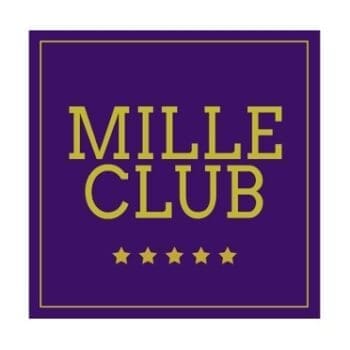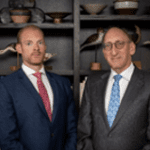 For those who have not followed our writing, the Mille Club refers to properties with rates over one thousand dollars, pounds or euros, with the ‘mille’ picked up from the Italian language. The Mille Club’s premise is that guests at this level seek an incredible experience rather than mere accommodations. Instead, hoteliers’ offerings compete for guests independent of location, making comp sets typically geographically derived moot. With great rates come great guest expectations.
For those who have not followed our writing, the Mille Club refers to properties with rates over one thousand dollars, pounds or euros, with the ‘mille’ picked up from the Italian language. The Mille Club’s premise is that guests at this level seek an incredible experience rather than mere accommodations. Instead, hoteliers’ offerings compete for guests independent of location, making comp sets typically geographically derived moot. With great rates come great guest expectations.
Current revenue management theory is all about numbers: rate cards, ADR, occupancy, market segments and RevPAR. Its primary focus is maximizing income from rooms’ inventory. Typically, it follows a Keynesian (John Maynard Keynes, famed British economist) theory, which inversely correlates price with occupancy. Anticipating future demand, revenue managers work tirelessly to adjust rates in order to maximize occupancy levels.
Often, this requires strategic input on segment forecasts, competitive analysis and historical data analysis. In-depth price calibration is critical and appropriate for properties in the lower and middle tiers. Here, price-sensitive consumers often make buying decisions based on fractions of a dollar. And it makes perfect sense; with fragile inventory such as hotel room nights, an unsold room is lost product. Moreover, RevPAR, ADR and OR are still important benchmarks for the real estate and finance sides of the business.
As we have outlined in previous musings, though, revenue management for Mille Club properties is diametrically opposite to that of their lower-priced brethren. Luxury consumers are agnostic to minor price differences, while competitive sets are difficult, if not impossible, to define as they lack close geographic parameters. Then, thanks to the pandemic, historical data provides limited helpful information, especially with all the post-pandemic shifts in the luxury hotel landscape.
What we can say for certain is that luxury guests are price inelastic but highly experience elastic. It’s the exclusive access, privacy, incredible design, exceptional F&B, activities and wellness programming that will allow a hotel to ramp up rate by hundreds of dollars above the property down the street.
But whose responsibility is it to coordinate a rate strategy and put some data science behind the numbers that will be presented to the GM? The total revenue manager (TRM for shorthand) is our solution to this quandary for the luxury category.
Classic benchmarks like RevPAR are still important, but rate structures operate more within ranges rather than micromanaged pricing increments. Given the reduced need for minute-over-minute fluctuations by the single dollar. there is less of a need to undertake an in-depth study of the historical RevPAR, rate and OR data that have dominated our industry’s analysis for the past few decades.
Accordingly, the TRM examines the rooms division’s performance and the total basket of revenue-generating ancillary profit centers. Their efforts are designed to build gross revenue per guestroom. Room rate alone will not determine their success. A collaborative effort is necessary, embracing every guest-facing opportunity.
As a segmentation specialist, the TRM can allow the revenue management system (RMS) to supply accurate insights that will guide the rooms revenue. This frees up time (with the right data connections) to focus on newer stats that take into account the performance of ancillaries and property utilization by each individual room occupant, including:
- LOS: length of stay; a metric where increases signal growth in guest satisfaction, loyalty and property utilization as well as reduced costs per room (fewer check-ins and checkout cleans)
- RevPOR: revenue per occupied room; giving more information on how overnight guests are spending their money besides only on the room booking
- RevPAG: revenue per available guest; teasing out the nuances of how occupants might be spending differently, such as for couples, families or bleisure travelers
- TRevPAR: total revenue per available room; very similar to RevPOR but this statistic also incorporates stay-independent income
- RevPAF/RevPAM: revenue per available square foot or square meter; getting even more granular in terms of how to optimize all physical spaces
Underpinning all these metrics is the emotional pull a hotel has – the ‘reason to visit’ for shorthand, if you will. Of primary importance in this regard is F&B. We all know that only a percentage of guests will utilize the spa or golf (if available), but it is guaranteed that guests will eat and drink. However, as hoteliers often joke, “The only reason we’re in the restaurant business is because it helps sell rooms.”
Nevertheless, the average table cover at many premier restaurants can now represent the equivalent value or a sizable portion of the nightly rate. Therefore, every TRM aims to integrate F&B consumption into every stay by analyzing every stage of the guest journey to see what motivates guests to buy.
This effort begins with examining the promotional offerings, public relations, marketing programs, packages and direct booking incentives then continues with prearrival upselling, check-in sales training, and mid-stay practices. Secondarily, ancillary revenue-generating services, such as the wellness center or golf, are added to the TRM action plan. Gone are departmental silos (or they should be). Finally, through listening to guests’ needs, cross-selling related products such as local excursions can now be measured insofar as their tangible effects on sentiment and the ability to drive nightly rate.
While this may sound like an integration of the tasks performed by marketing and the concierge, the goal for all three departments is the same: increasing total guest spending rather than merely focusing on increasing room rates and balancing occupancy levels. And from the guest’s perspective, more usage of the property is highly correlated with increased satisfaction, so it truly is a win-win. Whether the RM role evolves into the TRM depends on the skills of the team and redefining roles, but overall it’s clear that more attention must be given to ancillaries as a means of driving occupancy and building a healthy profitability mix.
This article may not be reproduced without the expressed permission of the authors.




















